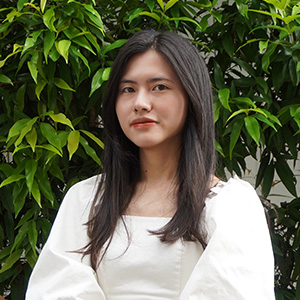NUS-SUTD PhD Symposium in Architecture

Architectural and Urban Engineering
Time: 13:30AM – 16:00 PM
Venue: Seminar Room 04, SDE1 Floor 4
Reviewers: Yuan Chao and Zheng Kai
Zhang Liqing
MULTI-SCALE CLIMATE-SENSITIVE PLANNING FRAMEWORK TO MITIGATE URBAN HEAT ISLAND EFFECT: A CASE STUDY IN SINGAPORE
Abstract: Urban heat island (UHI) is known as one of the severe environmental concerns caused by rapid urbanization. This research aims to provide a multi-scale climate-sensitive planning framework to UHI mitigation using morphological method. Three steps are conducted in the work flow: issue identification, potential evaluation and design implementation. Sky view factor and frontal area density are calculated in GIS tool to support the design-driven analysis. These two parameters perform both as urban design parameter and physical index that can interact with urban heat and aerodynamics respectively. A case study in Singapore is presented to demonstrate the framework. An empirical model between sky view factor and air temperature increment was modified by local data in Singapore. The result shows a UHI intensity of 3°C to 4°C in east-Singapore, which is identified as area with UHI issue. Natural ventilation potential, as one of the mitigation method, is evaluated through urban permeability map in identified area with frontal area density calculation. Climate-responsive urban design prototypes is further proposed based on the balance between various climate considerations. This study aims to increase the intervention of climate consideration on urban design process in practice, through GIS tool which is accessible to urban designer and decision-maker.
Speaker: Liqing ZHANG
 |
Zhang Liqing is a year-2 PhD student and research assistant in Urban Climate Design Lab, Department of Architecture. She received her B.Arch in Wuhan University, M.Arch in Tongji University and Vienna University of Technology. Her research interest focuses on climate-sensitive planning and sustainable built environment. Specifically, her research aims to enhance the engagement of climate consideration in the urban design process through interdisciplinary research, improving the awareness of the importance of urban climate among planners and decision-makers. Recently, her work focuses on design-driven and nature-based solution towards potential heat risk in Singapore.
Johann Kay Ann TAN
A COMPREHENSIVE SOUND CATEGORISATION SCHEME OF COMMONLY-OCCURRING SOUNDS IN THE URBAN CITY (SINGAPORE)
Abstract: The urban sound environment consists of a myriad of different sounds and noise sources. Existing literature had found conventional noise mitigation measures to be ineffective in resolving the increasing noise pollution of urban cities like Singapore. A growing direction in the research community to address environmental noise management using the soundscape approach has proved to be promising, the soundscape approach considers sounds as ‘resources’ rather than ‘waste’. This study sets out to investigate the different sounds that are commonly-occurring in the urban city based on a large recording sample collected for this study. The identification of common sound sources in the urban city context can help set a direction towards a comprehensive urban sound categorization or ‘taxonomy of sound’. Traditionally, a well-established categorization scheme has served as an essential step before the development and conceptualization of theories. Following a participatory online-questionnaire on the subjective evaluation of the identified sounds, a comprehensive categorization scheme for the commonly occurring sounds in the city will be developed for the urban soundscape, which will be useful as a common unifying framework for soundscape researchers and urban planners.
Speaker: Johann Kay Ann TAN
 |
Johann Tan is a 1st year MA (Arch) student and research assistant in the Department of Architecture, NUS. With a background in music and acoustics, his current research interest include architectural acoustics, urban soundscapes and active noise control.
Nogista Antanuri
CHARACTERISATION AND INNOVATION OF FAÇADE ENABLING NOISE CONTROL AND VENTILATION FOR TRAFFIC NOISESOURCE
Abstract: In compact, city-state region like Singapore, many residential and noise sensitive buildings are located near major noise sources, e.g., roads and train tracks. Many of those buildings are designed for natural ventilation. Therefore, in addition to the importance of comfort and health, these buildings are required to comply with government’s noise level and natural ventilation requirements. With land traffic noise at buildings located near and facing busy roads are typically high at most times within the day, the users typically close their conventional window at most times, thus natural ventilation design cannot work. The most common façade studies enabling noise control and ventilation, i.e.,acoustic plenum window, was used as starting point. With most previous studies working within small range of variables, the conclusive characteristics was hard to be achieved. Therefore, acoustic plenum window characterisation and model were developed based on significantly bigger and wider sample ranges to conclude the significance of different plenum window parameters. From there, the design was extended to different scales depending on the requirement of noise reduction, ventilation, and other important parameters. Theoretical, empirical and experimental studies were involved.
Speaker: Nogista Antanuri
 |
Nogista Antanuri is pursuing PhD degree in Architecture NUS, specialised in acoustics. He is currently part of the researcher team in City of Tomorrow (COT) project. He has seven-year-experience as acoustics and vibration consultant in Singapore with various project experience in different types of buildings, including healthcare, residential, educational, infrastructures, entertainment, research and commercial buildings, and different types of design, e.g., Architectural Acoustics, Acoustics/Noise &Vibration Control, Design & Testing, Environmental &Industrial Acoustics (Noise Impact Assessment), and Finite Element Analysis. He has educational background in Acoustical Engineering and Energy Systems from UK and USA. He was awarded Fulbright scholarship back in 2012.
Tianyi CHEN
DESIGN PRINCIPLES OF PREFAB UNITIZED BIPV WALLS FOR TROPICS
Abstract: Advantageously, building integrated photovoltaics (BIPV) afford clean energy on site and achieve zero-energy buildings. In high-density cities, BIPV applications on building facades are more preferable than those on rooftops. However, the lack of “plug-and-play” BIPV integrated unitized products in the market has hindered BIPV deployment, especially for high-rise building facades. To facilitate the merging of photovoltaics (PVs) in buildings, this study investigates the design method of a unitized BIPV envelope system based on the prefabrication technology of light gauge steel structure. The new BIPV envelope system is characterized by an all-in-one design with functional layers that allow the independent operation of each unit and an interlocking joint design that enables fast installation and guarantees air and water tightness requirements. Additionally, the embedded module-level power electronics device optimizes the power production performance of each PV module. Such a prefabricated BIPV envelope can be preassembled and prewired off-site. Moreover, the on-site installation can be manually completed by three workers without the need for scaffolding and operation from outside the building. Even workers without electrical experience can perform the circuit connections. The design methodology is sequentially developed and demonstrated using case studies, two-dimensional technical drawings, and three-dimensional models. Finally, a full-sized (scaled small) prototype is assembled and installed on an experimental building for verification and documentation.
Speaker: Tianyi CHEN
 |
Tianyi Chen previously graduated from Architectural Association (DRL) and ETH Zurich (MAS Chair of Computer Aided Architectural Design). Currently, his research topic is building integrated photovoltaics with prefabricated design and construction technology. He is interested in building performance design and data analysis. Previously, he was an architectural designer in Aedas and 10 Design of Hong Kong office.
Doreen Steven MLOTE
ALTERNATIVE SUSTAINABLE BUILDING MATERIALS AND DESIGN PROCESSES WITH ENHANCED LOAD-BEARING CAPACITY
Abstract: Construction materials and processes contributes to a considerable amount (about 40%) of total carbon dioxide emission on earth. Therefore, many researchers have recently worked on new construction mechanisms that accommodate a sustainable construction process. In the past decades, innovations such as Cross Laminated Timber (CLT) and other manufacturing methods for Mass Engineered Timber (MET) have made wood a serious alternative to carbon intensive and non-renewable materials such as concrete and steel. Sustainability potential of timber has been overshadowed by the mechanical properties’ defects hence marginalizing the use of this material in construction. More recently there have been developments in interests to manufacture wood composites particularly focusing on enhancing timber’s structural potential. Reinforced timber beams could offer great opportunity and advantages to create easy-to-construct and sustainable composites with wide range of applications – making them ideal for both repairing old structures and developing new ones. The targets are to define a distinct concept in new timber composites construction methods and to increase the awareness of wood as an attractive sustainable alternative to conventional construction materials. Preliminary results, from experiments done with carbon fibres as the reinforcement material, have proven that if reinforcement mechanisms with synthetic fibres are used to strengthen the timber elements, beams can become more effective structurally and further supplement concrete structures. Carbon fibre-reinforced timber beams were seen to be easy to construct and adaptable enough showing potential of up to 49% additional increase in structural capacity and 4.7 times less Global Warming Potential (GWP) than that produced from using concrete. This sustainability potential was estimated to increase to up to 26.9 times, less than concrete, if recycled carbon fibres were to be used for reinforcement instead of virgin carbon fibres. In addition to that, preliminary Topology Optimization results on a full-scaled maple wooden beam has demonstrated the possibility of material reduction to up to 60% less amount of timber material in the unreinforced timber beams equivalent to about 57% less than the GWP of full volume beam. A unique opportunity here is to explore how reinforcement mechanisms can work with topology optimized elements which is an avenue that is yet to be explored by other researchers in the field.
Speaker: Doreen Steven MLOTE
 |
Doreen Steven Mlote is a Tanzanian registered graduate Civil Engineer, Innovator, and currently a PhD researcher at the Singapore University of Technology and Design (SUTD). She possesses a Bachelor of Science Degree in Civil Engineering from Istanbul Technical University (ITÜ), Turkey, and a Master’s Degree in Engineering Innovation by Design from SUTD, Singapore. Miss Mlote was awarded top 3 finalist for the Best graduate Female Engineer award in Tanzania in 2021 by the Institution of Engineers Tanzania through her research projects and contribution to the field. She possesses interests in sustainability and developments of building materials, and further envisions incorporating innovation in designs towards sustainable construction processes. She conducted various studies throughout her career focusing on the role played by structural engineers and architects in contribution to the global warming potential.